 W
WAn illuminated manuscript is a manuscript in which the text is supplemented with such decoration as initials, borders (marginalia), and miniature illustrations. In the strictest definition, the term refers only to manuscripts decorated with either gold or silver; but in both common usage and modern scholarship, the term refers to any decorated or illustrated manuscript from Western traditions. Comparable Far Eastern and Mesoamerican works are described as painted. Islamic manuscripts may be referred to as illuminated, illustrated, or painted, though using essentially the same techniques as Western works.
 W
WHiberno-Saxon manuscripts are those manuscripts made in Ireland and Great Britain from about 500 CE to about 900 CE in England, but later in Ireland and elsewhere, or those manuscripts made on the continent in scriptoria founded by Hiberno-Scottish or Anglo-Saxon missionaries and which are stylistically similar to the manuscripts produced in Ireland and Britain. It is almost impossible to separate Anglo-Saxon, Irish, Scottish and Welsh art at this period, especially in manuscripts; this art is therefore called Insular art. See specifically Insular illumination and also Insular script. For English manuscripts produced after 900, see the List of illuminated Anglo-Saxon manuscripts.Antwerp Sedulius Barberini Gospels Bibliothèque Nationale MS lat. 10861 Lives of Saints Gospels of Saint Gatien of Tours Ambrosiana Jerome Ambrosiana Orosius Bodleian Ovid (Oxford, Bodleian Library MS Auct. F. 4. 32, ff. 37-47 Bodleian Philippus Book of Armagh Book of Cerne Book of Deer Book of Dimma Book of Durrow Book of Kells Book of Mulling Book of Nunnaminster Gospel Book British Library Add MS 36929 Psalter British Library Harley MS 1023 Gospel Book Gospels of Mael Brigte Cadmug Gospels Canterbury Gospels Cathach of St. Columba Codex Amiatinus Codex Bigotianus Codex Eyckensis Codex Usserianus Primus Codex Usserianus Secundus Cologne Collectio Canonum Cotton-Corpus Christi Gospel Fragment Cuthbert Gospel of St John British Library - for binding Cutbercht Gospels Durham Cassiodorus Durham Cathedral Library A. II. 10. Gospel Book Fragment Durham Cathedral Library A. II. 16. Gospel Book Fragment Durham Gospels Echternach Gospels Freiburg Gospel Book Fragment Gotha Gospels Harburg Gospels Hereford Gospels Karlsruhe Bede Leiden Pliny Leiden Priscian Leipzig Gospel Book Fragment Leningrad Bede Leningrad Gospels Leningrad Paulinus Lichfield Gospels Lindisfarne Gospels Lothian Psalter Macdurnan Gospels MacRegol Gospels Milan Theodore Rawlinson Gospels Ricemarch Psalter Royal Gospel Book Royal Irish Academy MS D. II. 3 Gospel of St. John Royal Prayer Book Salaberga Psalter Southampton Psalter St. Gall Gospel Book St. Gall Gospel of St. John St. Gall Priscian Stockholm Codex Aureus Stonyhurst Gospel - for binding Stowe Missal Stuttgart Psalter Tiberius Bede Trier Gospels Turin Gospel Book Fragment Utrecht Gospel Book Fragment (Utrecht, Universiteitsbibliotheek MS 32 Valenciennes Apocalypse Vespasian Psalter Vitellius Psalter Wurzburg St. Paul
 W
WThis is a list of illuminated manuscripts.
 W
WArmenian illuminated manuscripts form a separate tradition, related to other forms of Medieval Armenian art, but also to the Byzantine tradition. The earliest surviving examples date from the Golden Age of Armenian art and literature in the 5th century. Early Armenian Illuminated manuscripts are remarkable for their festive designs to the Armenian culture; they make one feel the power of art and the universality of its language. The greatest Armenian miniaturist, Toros Roslin, lived in the 13th century.
 W
WThe Augsburg Book of Miracles is an illustrated manuscript made in Augsburg in Germany in the 16th century.
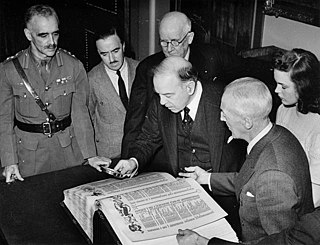 W
WThe eight Books of Remembrance housed in the Memorial Chamber in the Peace Tower of the Canadian Parliament Buildings in Ottawa are illuminated manuscript volumes recording the names of members of the Canadian Forces and Canadian Merchant Navy killed on active service in wartime, and in other conflicts. There are eight separate Books, beginning with the first to be commissioned listing the names of the dead from the First World War.
 W
WConservation and restoration of Mesoamerican codices is the process of analyzing, preserving, and treating codices for future study and access. It is a decision-making process that aims to establish the best possible methods and tools of preservation and treatment. The conservation-restoration of Mesoamerican literature is essential for understanding the ancient civilizations of Mexico. Efforts of restoration have proved difficult due to their fragility and importance of preserving historical and evidential value. Non-invasive technologies have been a more recent advancement, making analysis and treatment of pre-Hispanic codices a delayed process. As analysis continues, digitization has also been a more recent and valuable means of making information accessible to a wider audience, thus contributing to further research and preservation.
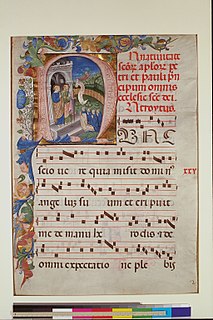 W
WDigital Scriptorium (DS) is a non-profit, tax-exempt consortium of American libraries with collections of pre-modern manuscripts, or manuscripts made in the tradition of books before printing. The DS database represents these manuscript collections in a web-based union catalog for teaching and scholarly research in medieval and Renaissance studies. It provides access to illuminated and textual manuscripts through online cataloging records, supported by high resolution digital images, retrievable by various topic searches. The DS database is an open access resource that enables users to study rare and valuable materials of academic, research, and public libraries. It makes available collections that are often restricted from public access and includes not only famous masterpieces of book illumination but also understudied manuscripts that have been previously overlooked for publication or study.
 W
WA facsimile is a copy or reproduction of an old book, manuscript, map, art print, or other item of historical value that is as true to the original source as possible. It differs from other forms of reproduction by attempting to replicate the source as accurately as possible in scale, color, condition, and other material qualities. For books and manuscripts, this also entails a complete copy of all pages; hence, an incomplete copy is a "partial facsimile". Facsimiles are sometimes used by scholars to research a source that they do not have access to otherwise, and by museums and archives for media preservation and conservation. Many are sold commercially, often accompanied by a volume of commentary. They may be produced in limited editions, typically of 500–2,000 copies, and cost the equivalent of a few thousand United States dollars. The term "fax" is a shortened form of "facsimile" though most faxes are not reproductions of the quality expected in a true facsimile.
 W
WFraktur is a highly artistic and elaborate illuminated folk art created by the Pennsylvania Dutch, named after the Fraktur script associated with it. Most Fraktur were created between 1740 and 1860.
 W
WThe Ghent-Bruges School is a manner or movement of manuscript illumination from about 1475 to about 1550 that developed in southern Netherlands, now Belgium. The term was first used in 1891 by Joseph Destree, author of Recherches sur les elumineurs flamands, and art historian Paul Durrieu.
 W
WThe Hastividyārnava, written by Sukumar Barkaith, is one of the best known illustrated manuscripts of Assam. Commissioned under the patronage of King Siva Singha and his queen consort Phuleswari, it deals with the management and care of elephants in the royal stables.
 W
WThe history of painting reaches back in time to artifacts from pre-historic humans, and spans all cultures. It represents a continuous, though periodically disrupted, tradition from Antiquity. Across cultures, and spanning continents and millennia, the history of painting is an ongoing river of creativity, that continues into the 21st century. Until the early 20th century it relied primarily on representational, religious and classical motifs, after which time more purely abstract and conceptual approaches gained favor.
 W
WInsular illumination refers to the production of illuminated manuscripts in the monasteries of Ireland and Great Britain between the 6th and 9th centuries, as well as in monasteries under their influence on continental Europe. It is characterised by decoration strongly influenced by metalwork, the constant use of interlacing, and the importance assigned to calligraphy. The most celebrated books of this sort are largely gospel books. Around sixty manuscripts are known from this period.
 W
WThe traditions of indigenous Mesoamerican literature extend back to the oldest-attested forms of early writing in the Mesoamerican region, which date from around the mid-1st millennium BCE. Many of the pre-Columbian cultures of Mesoamerica are known to have been literate societies, who produced a number of Mesoamerican writing systems of varying degrees of complexity and completeness. Mesoamerican writing systems arose independently from other writing systems in the world, and their development represents one of the very few such origins in the history of writing. The conquistadors brought their distinctive cultural creations, in the form of books, from Europe to the New World which further influenced native literature.
 W
WThe word miniature, derived from the Latin verb miniare indicates a small illustration used to decorate an ancient or medieval illuminated manuscript; the simple illustrations of the early codices having been miniated or delineated with that pigment. The generally small scale of such medieval pictures has led to etymological confusion with minuteness and to its application to small paintings, especially portrait miniatures, which did however grow from the same tradition and at least initially used similar techniques.
 W
WMutinensis gr. 122 is a 15th-century codex written in Greek, stored in the Biblioteca Estense in Modena, Italy. The designation "Mutinensis gr. 122" is modern, the codex itself bearing the title Epitome of Histories as it contains a copy of the work of the same name by the 12th-century Byzantine historian Joannes Zonaras. Zonaras's work is a chronicle of world history, focusing on the Roman and subsequent Byzantine Empire up until the ascension of Emperor John II Komnenos in 1118. The Modena codex also features additional work by two later scribes, extending the codex to cover Byzantine history after John II up until the Fall of Constantinople in 1453.
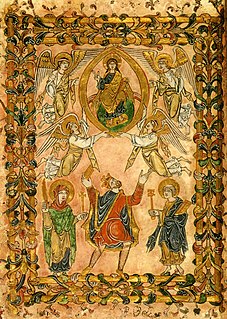 W
WThe New Minster Charter is an Anglo-Saxon illuminated manuscript that was likely composed by Bishop Æthelwold and presented to the New Minster in Winchester by King Edgar in the year 966 CE to commemorate the Benedictine Reform.
 W
WThe Notitia Dignitatum is a document of the late Roman Empire that details the administrative organization of the Eastern and Western Empires. It is unique as one of very few surviving documents of Roman government and describes several thousand offices from the imperial court to provincial governments, diplomatic missions, and army units. It is usually considered to be accurate for the Western Roman Empire in the AD 420s and for the Eastern or Byzantine Empire in the AD 390s. However, the text itself is not dated, and omissions complicate ascertaining its date from its content.
 W
WA Persian miniature is a small Persian painting on paper, whether a book illustration or a separate work of art intended to be kept in an album of such works called a muraqqa. The techniques are broadly comparable to the Western Medieval and Byzantine traditions of miniatures in illuminated manuscripts. Although there is an equally well-established Persian tradition of wall-painting, the survival rate and state of preservation of miniatures is better, and miniatures are much the best-known form of Persian painting in the West, and many of the most important examples are in Western, or Turkish, museums. Miniature painting became a significant genre in Persian art in the 13th century, receiving Chinese influence after the Mongol conquests, and the highest point in the tradition was reached in the 15th and 16th centuries. The tradition continued, under some Western influence, after this, and has many modern exponents. The Persian miniature was the dominant influence on other Islamic miniature traditions, principally the Ottoman miniature in Turkey, and the Mughal miniature in the Indian sub-continent.
 W
WPurple parchment, purple vellum or codex purpureus refers to manuscripts written on parchment dyed purple. The lettering may be in gold or silver. Later the practice was revived for some especially grand illuminated manuscripts produced for the emperors in Carolingian art and Ottonian art, in Anglo-Saxon England and elsewhere. Some just use purple parchment for sections of the work; the 8th-century Anglo-Saxon Stockholm Codex Aureus alternates dyed and un-dyed pages.
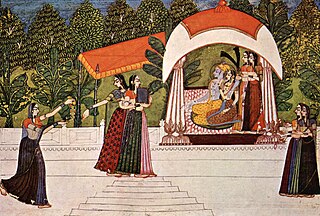 W
WRajput painting, also called Rajasthani painting, evolved and flourished in the royal courts of Rajputana in northern India, mainly during the 17th and 18th centuries. Artists trained in the tradition of the Mughal miniature were dispersed from the imperial Mughal court, and developed styles also drawing from local traditions of painting, especially those illustrating the Hindu religious epics, the Mahabharata and Ramayana.
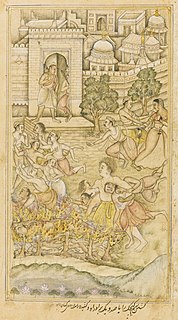 W
WThe Razmnama, British Library Or.12076 is an incomplete illustrated Mughal manuscript of the Razmnama, which is a translation of the Hindu epic Mahabharata written by Naqib Khan, and copied in AH 1007 (1598/99). It contains sections 14–18, the concluding part of the work, with some detached parts. There are 24 full-page Mughal paintings of high quality, all attributed to artists. It is the second of the four surviving Mughal illustrated manuscripts, described in the BL catalogue as "Sub-imperial Mughal".
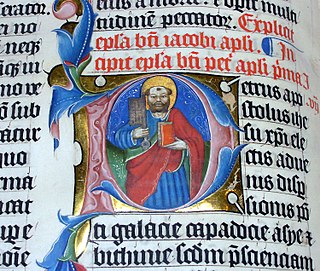 W
WRubrication is the addition of text in red ink to a manuscript for emphasis. Practitioners of rubrication, so-called rubricators or rubrishers, were specialized scribes who received text from the original scribe. Rubrication was one of several steps in the medieval process of manuscript making. The term comes from the Latin rubrīcāre, "to color red".
 W
WSchool of Paris refers to the many manuscript illuminators, whose identities are mostly unknown, who made Paris an internationally important centre of illumination throughout the Romanesque and Gothic periods of the Middle Ages, and for some time into the Renaissance. Among the most famous of these artists were Master Honoré, Jean Pucelle and Jean Fouquet.
 W
WA treasure binding or jewelled bookbinding is a luxurious book cover using metalwork in gold or silver, jewels, or ivory, perhaps in addition to more usual bookbinding material for book-covers such as leather, velvet, or other cloth. The actual bookbinding technique is the same as for other medieval books, with the folios, normally of vellum, stitched together and bound to wooden cover boards. The metal furnishings of the treasure binding are then fixed, normally by tacks, onto these boards. Treasure bindings appear to have existed from at least Late Antiquity, though there are no surviving examples from so early, and Early Medieval examples are very rare. They were less used by the end of the Middle Ages, but a few continued to be produced in the West even up to the present day, and many more in areas where Eastern Orthodoxy predominated. The bindings were mainly used on grand illuminated manuscripts, especially gospel books designed for the altar and use in church services, rather than study in the library.
 W
WTurnsole or folium was a dyestuff prepared from the annual plant Chrozophora tinctoria.